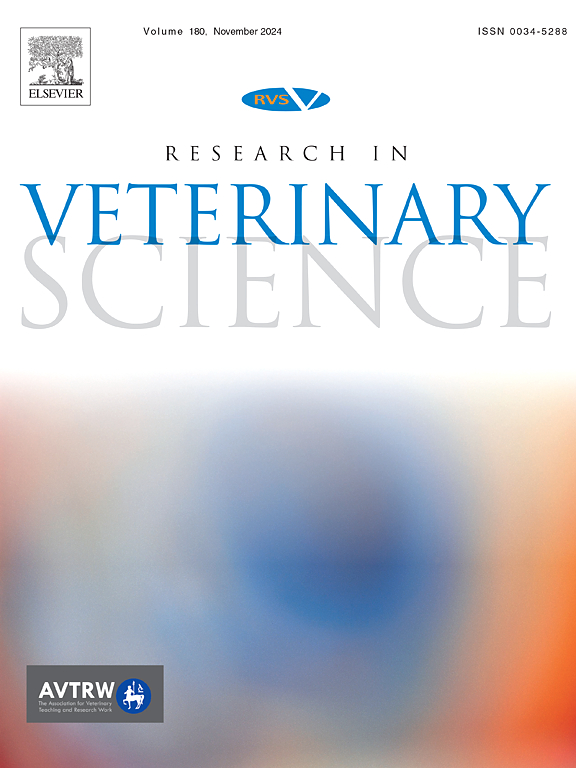开发一种 RFLP-PCR 检测方法,用于鉴别犬和人类样本中三种流行的旧世界利什曼病种
IF 2.2
3区 农林科学
Q1 VETERINARY SCIENCES
引用次数: 0
摘要
本文章由计算机程序翻译,如有差异,请以英文原文为准。

Development of an RFLP-PCR assay for discrimination of three prevalent Old world Leishmania species in canine and human samples
Dogs in endemic regions are susceptible to leishmaniasis, a common vector-borne illness. Serological techniques and direct parasitological inquiry have been employed for diagnosis. However, molecular techniques are more sensitive and specific for identifying Leishmania infection in both clinically healthy and diseased dogs. This research aims to develop an approach for molecular identification of the parasite using restriction fragment length polymorphism (RFLP) analysis. Samples of skin and lymph nodes were taken from suspected dogs and humans and smears were prepared. DNA was extracted, and PCR reactions targeting the ribosomal internal transcribed spacer 1 (ITS1) region were used to identify the infection. Also, the PCR products were sequenced to provide control specimens. Before conducting an RFLP analysis, a bioinformatic study was performed on related sequences from the GenBank, as well as some previous data, to verify the results of RsaI and ApoI enzymatic digestion. The ITS1 PCR products were then subjected to digestion by these two enzymes, and the resulted pattern on the agarose gel were compared to those produced by the enzyme HaeIII, commonly used in other studies. Using the RsaI enzyme, fragments of approximately 95 and 146 bp were obtained for L. infantum, while L. tropica and L. major remained uncut. ApoI produced fragments of 101 and 140 bp for L. infantum and 108 and 157 bp for L. major. Based on these results, RFLP analysis with RsaI and ApoI proved to be a reliable tool for detecting different Leishmania species using a defined algorithm.
求助全文
通过发布文献求助,成功后即可免费获取论文全文。
去求助
来源期刊

Research in veterinary science
农林科学-兽医学
CiteScore
4.40
自引率
4.20%
发文量
312
审稿时长
75 days
期刊介绍:
Research in Veterinary Science is an International multi-disciplinary journal publishing original articles, reviews and short communications of a high scientific and ethical standard in all aspects of veterinary and biomedical research.
The primary aim of the journal is to inform veterinary and biomedical scientists of significant advances in veterinary and related research through prompt publication and dissemination. Secondly, the journal aims to provide a general multi-disciplinary forum for discussion and debate of news and issues concerning veterinary science. Thirdly, to promote the dissemination of knowledge to a broader range of professions, globally.
High quality papers on all species of animals are considered, particularly those considered to be of high scientific importance and originality, and with interdisciplinary interest. The journal encourages papers providing results that have clear implications for understanding disease pathogenesis and for the development of control measures or treatments, as well as those dealing with a comparative biomedical approach, which represents a substantial improvement to animal and human health.
Studies without a robust scientific hypothesis or that are preliminary, or of weak originality, as well as negative results, are not appropriate for the journal. Furthermore, observational approaches, case studies or field reports lacking an advancement in general knowledge do not fall within the scope of the journal.
 求助内容:
求助内容: 应助结果提醒方式:
应助结果提醒方式:


